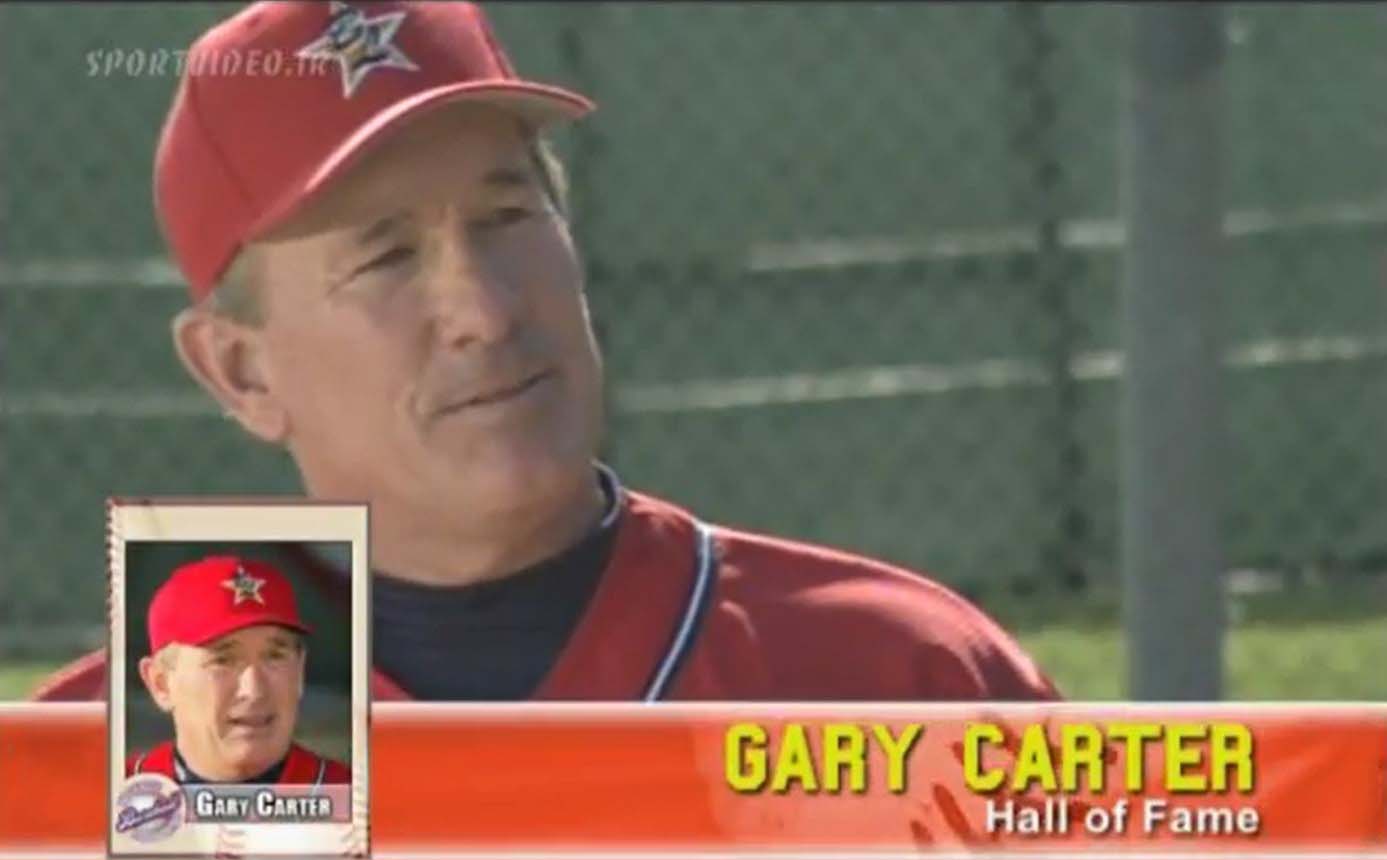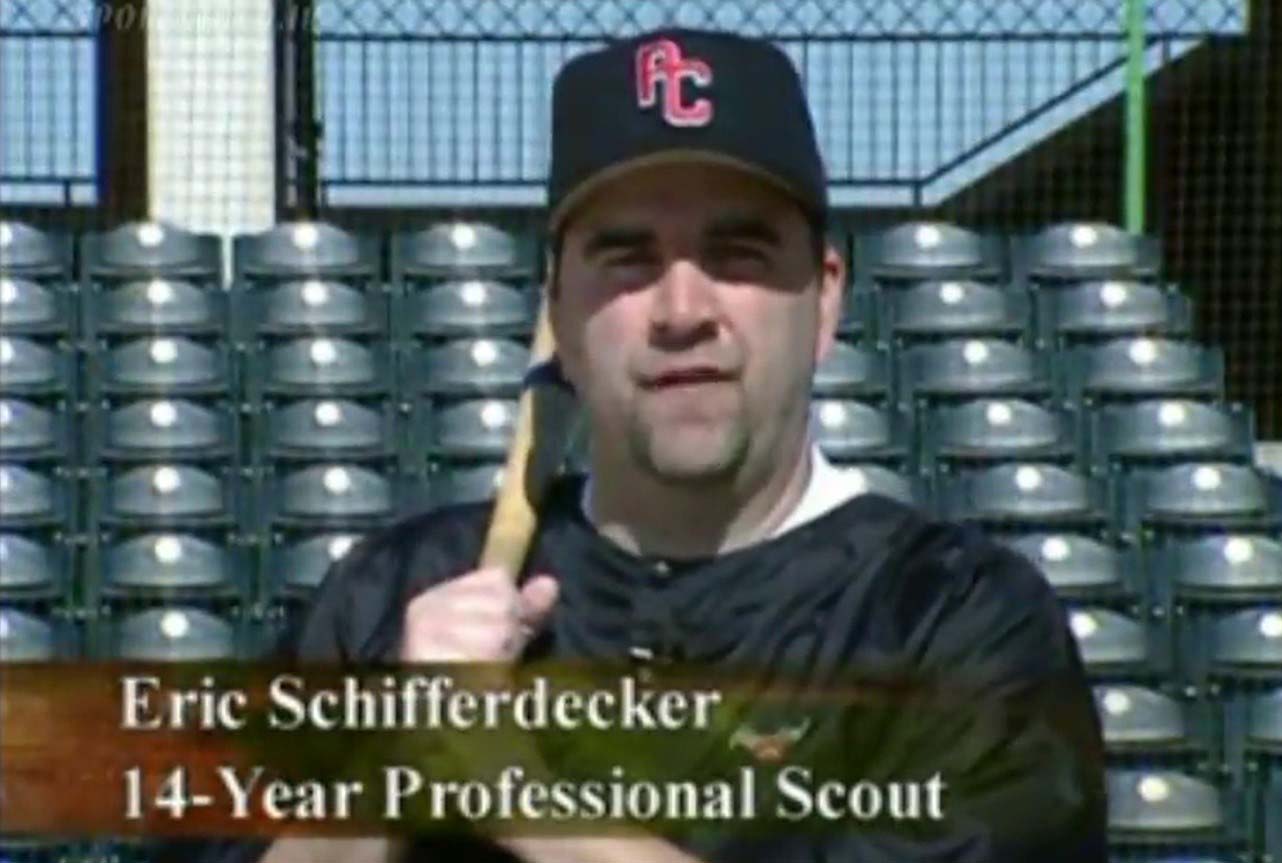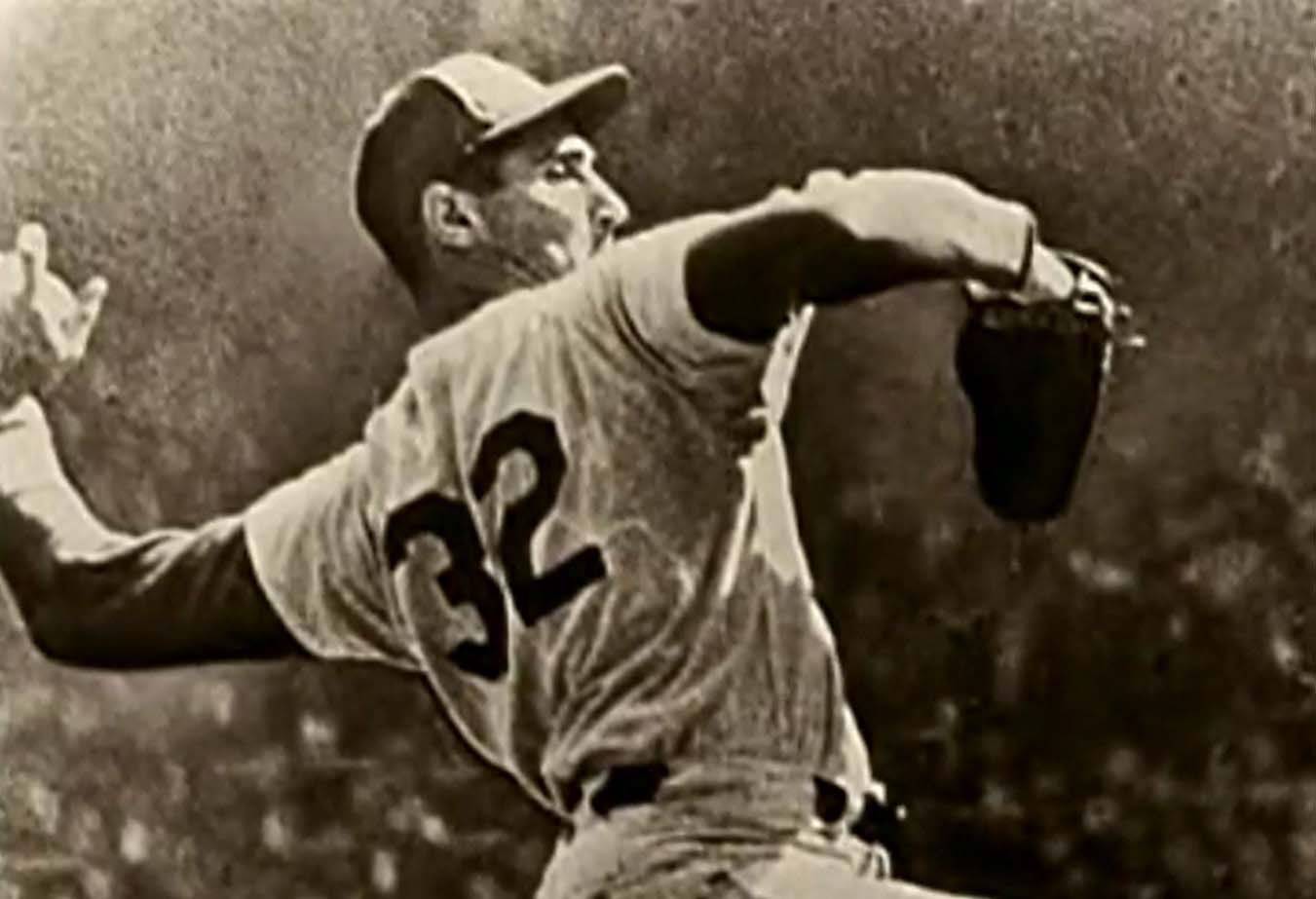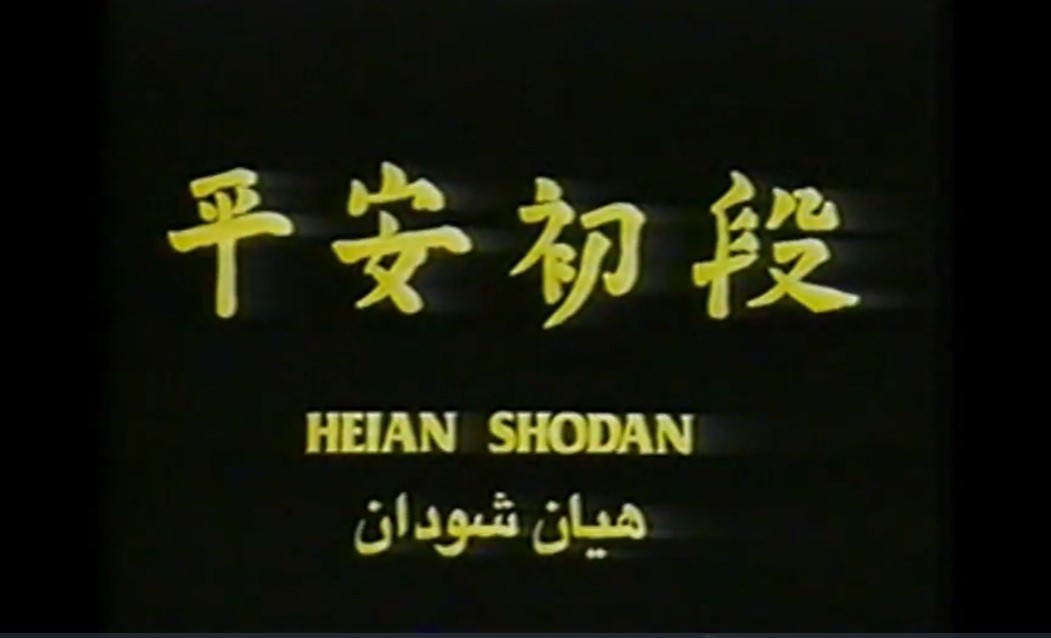مستند کن برنز بیسبال اینینگ 01 بازی ما 1840S 1900
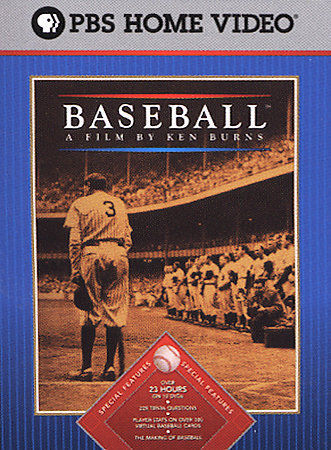 |
نام اصلی: Ken Burns Baseball Inning 01 Our Game 1840S 1900 زبان فیلم: انگلیسی سال تولید: 2004 کمپانی سازنده: www.amazon.com مستند کن برنز بیسبال اینینگ 01 بازی ما 1840S 1900 |
|
نام اصلی: Ken Burns Baseball Inning 01 Our Game 1840S 1900 |
بیسبال، یک مینیسریال مستند تلویزیونی آمریکایی ساخته شده توسط کارگردان مستند کن برنز درباره تاریخ ورزش بیسبال است.
این برنامه ابتدا در PBS پخش شد و این نهمین مستند برنز بود و جایزه امی چیمی برتر برای مجموعه اطلاعاتی در سال ۱۹۹۵ را برنده شد. بخشی از هزینههای تولید آن توسط سازمان ملی حمایت از علوم انسانی تأمین شده بود.
فرمت
بیسبال، همانند مستندهای قبلی برنز مانند جنگ داخلی، از عکسهای آرشیوی و فیلمهای مستند به همراه مصاحبهها برای ارائه تصویری استفاده میکند. بازیگران صدایی را برای تلفظ متون نوشتاری (نامهها، سخنرانیها و غیره) در برابر عکسها و ویدیوها فراهم میکنند. قسمتها با موسیقی زمانهای گذشته از مجموعههای قبلی برنز، موسیقی اصلی اجرا شده یا ضبطهایی از لوئی آرمسترانگ تا الویس پریسلی، ترکیب میشوند. جان چانسلر، مجری خبری شبانه خبرهای انبیسی از ۱۹۷۰ تا ۱۹۸۲، نقش راوی این مجموعه را برعهده داشت.
این مستند به نه بخش تقسیم شده است، هرکدام به عنوان یک “اختتام” شناخته میشود که مراحل بازی بیسبال را دنبال میکند. هر “اختتام” یک دوره زمانی را بررسی میکند، به ذکر لحظات مهم در جهان و در آمریکا پرداخته و با یک پیشگفتار کوتاه که عملکرد بازی در آن دوره را مورد بررسی قرار میدهد، شروع میشود. پیشگفتار با اجرای “پرچم آمریکا” به همان شیوهای که یک بازی واقعی بیسبال شروع میشود، به پایان میرسد، معمولاً توسط یک گروه برنجی، با یک یا دو استثناء: دهه ۱۹۲۰، جایی که نسخهای از پیانو آن دوره اجرا میشود، و دهه ۱۹۶۰، جایی که نسخهای از آن توسط جیمی هندریکس در وودستاک اجرا میشود. در برخی از قسمتهای “اختتام”، از نسخه دوران مربوط به سرود بیسبال “ببرم من را به بازی بیسبال” استفاده میشود. در حدود نصف راه هر “اختتام”، کارت عنوانی ظاهر میشود که “پایین” را نشان میدهد و قسمت را به دو بخش تقسیم میکند به شکلی که یادآور بازی میشود؛ در “اختتام” هفتم، “پایین” فوراً قبل از “استراحت نیمه” اجرا میشود. در این نیمههای قسمت، بخشهای کوچکتری با یک کارت عنوانی ساده بودجهبندی میشود که اغلب نقاط مهم تاریخ بیسبال را برجسته میکند. این بخشها معمولاً شامل برجستههای بازیکنان، بازیهای مهم یا پرروند از ایجاد برندهای مختلفی که اکنون در سراسر بیسبال معروف هستند، میشوند.
۱۲ دورهی مسابقات
دوره اول – بازی ما
این دوره به عنوان معرفی بازی و سریال عمل میکند و تاریخچه بیسبال و بازی در دورههای قبل از قرن بیستم را پوشش میدهد، تا جایی که لیگهای حرفهای باعث رشد و محبوبیت بازی در سراسر کشور در حال رشد میشوند.
تاریخ اصلی پخش: یکشنبه، ۱۸ سپتامبر ۱۹۹۴.
دوره دوم – مثل یک جنگ
این دوره در حدود ۱۹۰۰ تا ۱۹۱۰ را پوشش میدهد و شامل تشکیل لیگ آمریکا و ادغام آن با لیگ ملی است، که به تشکیل سری جهانی منجر میشود، همچنین ظهور اولین ستارههای بزرگ بازی مانند کریستی متیوسون و هونوس واگنر است که به تمیز کردن رویای بازی بیسبال به عنوان یک بازی پر از بزرگمانی و مشاجرههای قبلی میپردازند. تای کاب نیز به عمق بررسی میشود (عنوان این دوره از یکی از جملات اوست). بسیاری از نقل قولهای استفاده شده در این دوره و دورههای اولیه دیگر از کتاب معروف لارنس اس. ریتر “مجد” گرفته شدهاند.
تاریخ اصلی پخش: دوشنبه، ۱۹ سپتامبر ۱۹۹۴.
دوره سوم – ایمان پنجاه میلیون نفر
این دوره حدود ۱۹۱۰ تا ۱۹۲۰ را پوشش میدهد و بیسبال را در حالی که در بیشترین سطح محبوبیتش است دنبال میکند. این دوره به طور سنگین بر فاجعه سوکس سیاه متمرکز است و عنوان آن از یک خط در رمان گتسبی بزرگ گرفته شده است. این خط به این معنا است که چقدر آسان بود برای شرطبندان میانجیگری کنند با اعتمادی که مردم به عدالت بازی قرار دادهاند.
تاریخ اصلی پخش: سهشنبه، ۲۰ سپتامبر ۱۹۹۴.
دوره چهارم – گنج ملی
این دوره حدود ۱۹۲۰ تا ۱۹۳۰ را پوشش میدهد و بر بازی بیسبال در حال بازیابی از اسکندال سوکس سیاه تمرکز دارد، که بیشتر افتخار را به افزایش ضربهزنی قدرتی در سراسر بازی، توسط نجاتدهندهاش بیب روث میدهد. عنوان این دوره از آنچه نویسندگان ورزش روث صدا کردهاند گرفته شده است. در یک مصاحبه ارائه شده به MLB Network در زمان پخش مجدد این سریال در سال ۲۰۰۹، برنز اعلام کرد او ابتدا میخواست دوره چهارم را “آن پسر بزرگ خوککش” نامگذاری کند، یک نامی که توسط بسیاری از افراد در آن دوره به روث داده شده بود. با این حال، کتاب همراه از این عنوان استفاده میکند.
تاریخ اصلی پخش: چهارشنبه، ۲۱ سپتامبر ۱۹۹۴.
دوره پنجم – توپ سایه
این دوره حدود ۱۹۳۰ تا ۱۹۴۰ را پوشش میدهد. بخش قابل توجهی از این دوره بر لیگهای سیاه و بازیکنان بزرگ و سازماندهندگانی که از لیگهای اصلی خارج شدهاند تمرکز دارد. همچنین، قسمت با واکنش بیسبال سازماندهی شده به رکود بزرگ و نیز ناپدید شدن نجمان شناخته شدهاش مانند بیب روث و ظهور قهرمانان جدیدی مانند باب فلر، هنک گرینبرگ و جو دی ماجیو مواجه میشود.
تاریخ اصلی پخش: پنجشنبه، ۲۲ سپتامبر ۱۹۹۴.
دوره ششم – زمان سرگرمی ملی
در این دوره، حدوداً از سال ۱۹۴۰ تا ۱۹۵۰ را پوشش داده میشود. تاکید اینجا بر این است که بیسبال بالاخره آن چیزی شد که همیشه ادعا میکرد: یک بازی ملی، زیرا آفریقاییهای آمریکایی بالاخره مجاز به بازی در لیگ بزرگ بیسبال شدند که توسط جکی رابینسون رهبری شده بودند. این دوره همچنین به این موضوع میپردازد که چگونه بازی به جنگ جهانی دوم پاسخ داد و بیشتر از همیشه نمادی از آمریکا شد.
تاریخ اصلی پخش: یکشنبه، ۲۵ سپتامبر ۱۹۹۴.
دوره هفتم – پایتخت بیسبال
در این دوره، حدوداً از سال ۱۹۵۰ تا ۱۹۶۰ را پوشش داده میشود. برنز بزرگی تیمهای مستقر در نیویورک (یانکیهای نیویورک، جاینتهای نیویورک و بروکلین داجرز) را تأکید میکند. این دوره همچنین یکی از دورانهای طلایی بیسبال را پوشش میدهد و چگونگی تأثیر تغییرات آمریکا، مانند ترک مناطق شهری و مهاجرت به مناطق حومهای بازتاب در بیسبال داشت.
تاریخ اصلی پخش: دوشنبه، ۲۶ سپتامبر ۱۹۹۴.
دوره هشتم – بازی تازهای
در این دوره، حدوداً از سال ۱۹۶۰ تا ۱۹۷۰ را پوشش داده میشود. در حالی که کشور تغییرات طوفانی را تجربه میکرد، بیسبال نیز مستثنی نبود، زیرا رکورد محبوب بیب روث در خردهفصل ۶۰ خانهٔ زده در یک فصل توسط یک بازیکن غمگین و پیچیده به نام راجر ماریس تهدید میشود، و برای اولین بار در دههها، اسلایرها، به رهبری ستارگانی همچون سندی کوفکس و باب گیبسون، در بازی غالب میشوند. از دست دادن قدرت ضربه خانگی و خیانت به گذشته بازی، به همراه افزایش شتابی فوتبال، باعث میشود که بسیاری از مردم پشت به بیسبال بزنند. گسترش و کار اجباری موضوعات اصلی این دوره هستند.
تاریخ اصلی پخش: سهشنبه، ۲۷ سپتامبر ۱۹۹۴.
دوره نهم – خانه
آخرین دوره حدوداً از سال ۱۹۷۰ تا ۱۹۹۲ را پوشش میدهد. در حالی که بیسبال دهه ۱۹۶۰ را زنده میماند، تغییرات پایان نمییابند و به نوعی، تنشهای تلخترین آن تازه آغاز میشود. موضوعات اصلی شامل تشکیل اتحادیه بازیکنان، همکاری مالکان، آزادی بخشی، و مواد مخدر، و همچنین شرطبندی و رسواییها میشود. با این حال، بازی موفق میشود قلب بسیاری از مردم را با لحظاتی همچون هیجان مسابقات جهانی ۱۹۷۵ و بازگشت یانکیهای نیویورک به غلبه بر سایر تیمها به دست آورد. مستند با اظهار تعجب آهنین میپایاند که بیسبال (و به طور غیر مستقیم مسابقات جهانی) جنگها، رکودها، ویروسهای ترشحی، و انواع رسواییها را تحمل کرده و از بین نرفته است. مسابقات جهانی ۱۹۹۴، مسابقاتی که سالیانه اولین بار پخش فیلم به این ارایه میپرداخت، به دلیل اعتصاب بازیکنان لغو شد. این برای اولین بار از سال ۱۹۰۴ بود که مسابقات جهانی برگزار نشد.
تاریخ اصلی پخش: چهارشنبه، ۲۸ سپتامبر ۱۹۹۴.
دوره دهم – (قسمت ۱، بالای دهم)
این ارایهٔ دو قسمتی، چهار ساعتی میپوشاند داستانهایی از سال ۱۹۹۲ تا ۲۰۱۰. قسمت اول در مورد اعتصاب کارگری دهه ۱۹۹۰ صحبت میکند که باعث ناراحتی هواداران شده و همچنین تعقیب رکورد خانه زدن زیر راهنمایی مارک مگوایر و سمی سوزا در سال ۱۹۹۸ مورد بررسی قرار میگیرد.
تاریخ اصلی پخش: سهشنبه، ۲۸ سپتامبر ۲۰۱۰.
دوره دهم – (قسمت ۲، پایین دهم)
این پخش دو قسمتی با مدت چهار ساعت، داستانهایی از سال ۱۹۹۲ تا ۲۰۱۰ را پوشش میدهد. قسمت دوم بیشتر به پوشش اسکاندال استروئیدی در دهه ۲۰۰۰ میپردازد، همچنین نقشی که بیسبال در کمک به بهبود کشور پس از ۱۱ سپتامبر ایفا کرد، و چگونگی اینکه بازی، حتی در میان بزرگترین بحران اقتصادی آمریکا از دوران بزرگترین رکود اقتصادی، همچنان به عنوان پرطرفدارترین بازی ممکن ادامه پیدا کند.
Orginal Description:
Baseball is a 1994 American television documentary miniseries created by documentary filmmaker Ken Burns about the history of the sport of baseball.
First broadcast on PBS, this was Burns’ ninth documentary and won the 1995 Primetime Emmy Award for Outstanding Informational Series.[1] It was funded in part by the National Endowment for the Humanities.
Format
Baseball, like Burns’ previous documentaries such as The Civil War, used archived pictures and film footage mixed with interviews for visual presentation. Actors provide voice over reciting written work (letters, speeches, etc.) over pictures and video. Episodes are interspersed with the music of the times taken from previous Burns series, original played music, or recordings ranging from Louis Armstrong to Elvis Presley. John Chancellor, anchor of the NBC Nightly News from 1970 to 1982, narrated the series.
The documentary is divided into nine parts, each referred to as an “inning”, following the division of a baseball game. Each “inning” reviews an era, mentioning notable moments in the world and in America itself, and begins with a brief prologue acting as an insight to the game during that era. The prologue ends with the playing of “The Star-Spangled Banner” just as a real baseball game would begin, being performed usually by a brass band, with a couple of exceptions: The 1920s, where the rendition is played by a piano of the era, and the 1960s, where the rendition is the version played by Jimi Hendrix at Woodstock. In some “inning” episodes, a period version of the baseball anthem “Take Me Out to the Ball Game” is used. Roughly halfway through each “inning”, a title card appears, reading “Bottom of” the inning, dividing the episode into two parts in a manner also recalling the game; in the seventh “inning”, the “Bottom” is immediately preceded by the “seventh-inning stretch”. Within these halves of the episode, there are smaller segments also highlighted with a simple title card that often highlights various important parts of baseball’s history. These often include player highlights, important or eventful games, or the creation of various brands that are now well known throughout baseball such as Louisville Slugger.
The Nine Innings
1st Inning – Our Game
This inning serves as an introduction to the game and the series, and covers baseball’s origins and the game as it evolved prior to the 20th century, to where professional leagues make the game grow in popularity, and notoriety, throughout the growing nation.
Original airdate: Sunday, September 18, 1994.[2]
2nd Inning – Something Like A War
This inning covers approximately 1900 to 1910, and includes the formation of the American League and its integration with the National League, culminating in the establishment of the World Series, as well as the emergence of the game’s first great stars, Christy Mathewson and Honus Wagner, who help to clean up baseball’s previously bad reputation as a rowdy, brawling game. Ty Cobb is discussed in-depth (the title of this inning comes from one of his many quotes). Many of the quotes used in this inning and of the other early innings are taken from Lawrence S. Ritter’s best selling The Glory of Their Times.
Original airdate: Monday, September 19, 1994.[2]
3rd Inning – The Faith of Fifty Million People
This inning covers approximately 1910 to 1920, and follows baseball as it goes through its greatest era of popularity yet. It heavily focuses on the Black Sox Scandal, taking its title from a line in the novel The Great Gatsby. The line refers to how easy it was for gamblers to tamper with the faith people put in the game’s fairness.
Original airdate: Tuesday, September 20, 1994.[2]
4th Inning – A National Heirloom
This inning covers approximately 1920 to 1930, and focuses on baseball’s recovery from the Black Sox Scandal, giving much of the credit to the increase in power hitting throughout the game, led by its savior Babe Ruth. The title comes from what sports writers called Ruth. During an interview given to MLB Network during the series’ re-airing in 2009, Burns stated he originally wanted to title the 4th Inning “That Big Son-of-a-Bitch”, a name given to Ruth by many in the game during that era. However, the companion book uses this title.
Original airdate: Wednesday, September 21, 1994.[2]
5th Inning – Shadow Ball
This inning covers approximately 1930 to 1940. A great deal of this inning covers the Negro leagues, and the great players and organizers who were excluded from the Major Leagues. Also, the episode deals with organized Baseball’s response to the Great Depression, as well as the sad decline of its most iconic star, Babe Ruth, and the emergence of new heroes, like Bob Feller, Hank Greenberg, and Joe DiMaggio.
Original airdate: Thursday, September 22, 1994.[2]
6th Inning – The National Pastime
This inning covers approximately 1940 to 1950. The emphasis here is on baseball finally becoming what it had always purported to be: a national game, as African-Americans are finally permitted to play Major League Baseball, led by Jackie Robinson. This inning also looks at how the game responded to World War II and how the game became, more than ever, a symbol of America itself.
Original airdate: Sunday, September 25, 1994.[2]
7th Inning – The Capital of Baseball
This inning covers approximately 1950 to 1960. Burns emphasizes the greatness of the three teams based in New York (the New York Yankees, the New York Giants, and Brooklyn Dodgers). This inning also covers one of baseball’s golden eras and how America’s own changes, such as leaving urban areas and heading west to more open suburbs, caused baseball to follow.
Original airdate: Monday, September 26, 1994.[2]
8th Inning – A Whole New Ballgame
This inning covers approximately 1960 to 1970. As the nation underwent turbulent changes, baseball was not immune, as Babe Ruth’s beloved record of 60 home runs in a season is threatened by a sullen and complicated player, Roger Maris, and for the first time in decades, pitchers, led by stars Sandy Koufax and Bob Gibson, dominate the game. The loss of home run power and betrayal to the game’s past, combined with the meteoric rise of football, cause many to turn their back on baseball. Expansion and labor are major topics in this inning.
Original airdate: Tuesday, September 27, 1994.[2]
9th Inning – Home
The final inning covers approximately 1970 to 1992. While baseball survived the 1960s, the changes were not over, and in some ways, its most bitter conflicts were just beginning. Major topics included the formation of the players’ union, the owners’ collusion, free agency, and drugs, as well as gambling, scandals. However, the game manages to win back the hearts of many with such moments as the excitement of the 1975 World Series and the return of the New York Yankees to dominance. The documentary ends with an ironic boast baseball (and indirectly the World Series) had survived wars, depressions, pandemics, and numbers of scandals and thus could never be stopped. The 1994 World Series, the series to be played the year the film first aired on PBS, was cancelled due to a players’ strike. This marked the first time since 1904 the World Series was not played.
Original airdate: Wednesday, September 28, 1994.[2]
10th Inning – (Episode 1, Top of the 10th)
This two part, four hour encore presentation covers stories from 1992 to 2010. The first part discusses the labor stoppage of the 1990s, which disgruntles fans as well as Mark McGwire’s and Sammy Sosa’s pursuit of the home run record in 1998.
Original airdate: Tuesday, September 28, 2010.
10th Inning – (Episode 2, Bottom of the 10th)
This two part, four hour encore presentation covers stories from 1992 to 2010. The second part spends a fair amount of time covering the steroid scandal in the 2000s, as well as the role baseball played in helping the nation heal from 9/11, and how the game, even in the midst of America’s greatest economic crisis since the Great Depression continue to become as popular as it has ever been.








